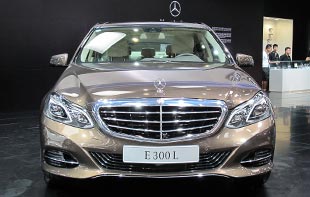

There was no quality assurance, he says, no such thing as customer service. Those who could buy broken refrigerators would consider themselves lucky, because they could fix them.
"But Haier's CEO Zhang Ruimin knew this would not last. He said, 'Some day, China will be a developed market. We need to be in a position where we have brand differentiation'," Fischer says.
In 1985, when a customer returned a refrigerator to Haier for quality reasons, Zhang and the customer went through an entire inventory of 400 refrigerators looking for a replacement. In the process, he discovered that 20 percent of his goods were of unacceptable quality, Fischer says.
Zhang then instructed 76 employees to smash 76 substandard refrigerators in the street outside the Haier factory to publicly demonstrate the company's quest for quality.
"Zhang made a bet that there would be people willing to pay a premium for quality products in the future, so he worked on introducing a quality product ahead of such market demand," Fischer says.
Haier went on to introduce a new reward system for employees, where their output is evaluated daily. Managers attributed each task to a specific person, so mistakes were also quickly identified, rectified and penalized.
This model helped Haier to achieve quality for refrigerators, but, several years later, when its competitors caught up, it moved ahead again by creating a service-oriented strategy.
"By this time, Zhang said that Haier needed to become more responsive to customer needs. He did it by building market chains," Fischer says.
Each department within the company became the customer of the next department along the supply chain, the pooled feedback helping the company focus on the needs of the end buyers.
The design department, for instance, would be the customer of the environmental testing laboratory; the product divisions became customers of the technical facilities department; managers and employees were the customers of Haier's staff training unit.
This happened in the 1990s, Fischer notes, and come the turn of the century, Haier and Zhang's thinking again had a jump on the market. He proposed the concept of "zero distance to the customer" so the ZZJYT units were created.
Fischer says the story of Haier fascinates him, and counters the stereotypical view that Chinese products are cheap and of low quality.
Now he is researching more Chinese companies to better understand the connection between innovative management techniques and China's business environment and cultural influences.
Another project that will soon bring him closer to Chinese business leaders is the China Strategy Challenge, a four-day program next month organized by IMD and China's Cheung Kong Graduate School of Business.
It will take place at IMD's campus in Lausanne and be attended by both Chinese and European entrepreneurs, who, it is hoped, will learn lessons from each other through group activities.
Fischer says learning from European counterparts is an important step for Chinese entrepreneurs to turn their companies into global industry leaders. Even Haier has something to learn.
"Haier is an industry leader today, but it has to continue to transform itself to become a leader tomorrow," he says. "Haier's advantage is its ability to learn new lessons."
Zhang, he says, had two ideas that helped Haier's success - the determination to serve customers better, and empowering employees by giving them more independence.
 Models at Ford pavilion at Chengdu Motor Show
Models at Ford pavilion at Chengdu Motor Show
 Brilliant future expected for Chinese cinema: interview
Brilliant future expected for Chinese cinema: interview
 Chang'an launches Eado XT at Chengdu Motor Show
Chang'an launches Eado XT at Chengdu Motor Show
 Hainan Airlines makes maiden flight to Chicago
Hainan Airlines makes maiden flight to Chicago
 Highlights of 2013 Chengdu Motor Show
Highlights of 2013 Chengdu Motor Show
 New Mercedes E-Class China debut at Chengdu Motor Show
New Mercedes E-Class China debut at Chengdu Motor Show
 'Jurassic Park 3D' remains atop Chinese box office
'Jurassic Park 3D' remains atop Chinese box office
 Beauty reveals secrets of fashion consultant
Beauty reveals secrets of fashion consultant